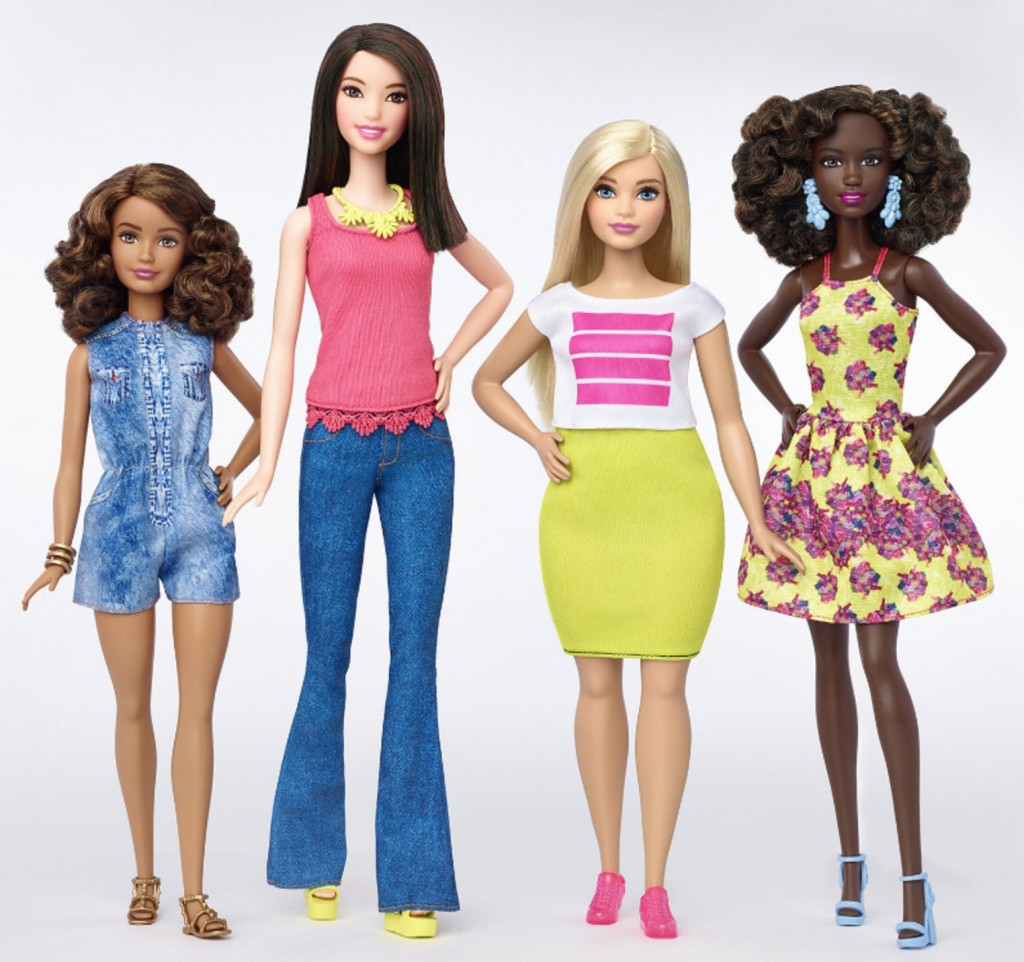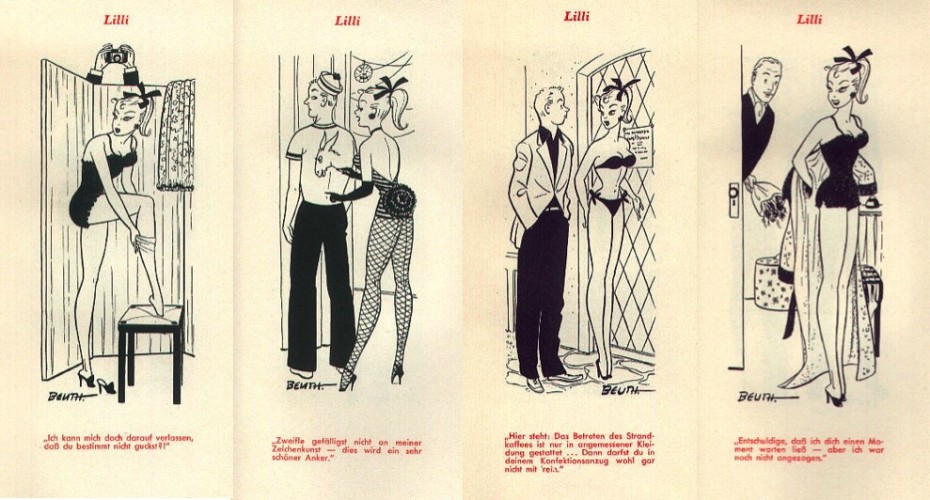28 Jan Don’t be like Mattel and take 55+ Years to Listen to Your Customers
Earlier today, Mattel announced that it has launched three new Barbies:
- A tall and skinny Barbie,
- A curvy Barbie, and
- A petite Barbie,
with each available in varying skin tones, hairstyles and outfits.
Here’s a photo of some of these new dolls:
On the one hand, congrats to Mattel for recognizing that people come in all shapes and sizes.
On the other hand, how embarrassing! To think that it’s been over half a century since Mattel launched Barbie and now, nearly 57 years later, the company has finally realized that maybe it should listen to its customers.
A word of advice my friends. If you have one customer complaint/suggestion, such feedback should be addressed and taken under advisement.
Two to 10 complaints/suggestions? Time to sit up and take notice.
But when hundred, thousands, even millions of customers voicing negative opinions about something you have or have not done (or a product you have produced, like the Barbie doll), maybe, just maybe you should
CHANGE WHAT YOU’RE DOING!
So . . . kudos to Mattel (I guess) for launching new Barbie dolls that come closer to reflecting reality.
= = = = = = = = = = = = = = = = = = = =
UPDATE:
Shortly after uploading this Post, I got a “Thanks for sharing” comment on LinkedIn from reader Shawn Finder, to which I replied, “Thanks, Shawn. I’m curious, did you think I was too harsh?
Shortly thereafter, another reader then responded to my reply with the following response:
“The real issue is you weren’t accurate. Changes have been made to Barbie several times, many due to customer input. Maybe a little research first would have helped?”
For the record, I did, in fact, do some digging into Barbie’s background; I just chose to not write about the additional info about Barbie’s history. But for clarity’s sake, let me add a few more notes.
Case in point, given that Barbie is a bit younger than I am (and that my younger sisters had Barbie dolls while they were growing up), I was aware that Mattel had launched an African-American version of Barbie back in the 1960s (1967, to be exact). However, I was not aware that this doll was called “Colored Francie” (I kid you not — “Colored“), and that Mattel used the same molds it had for previous Barbies, which meant the facial features for Colored Francie matched Caucasian women and not women of African descent.
Or there was also Teen Talk Barbie, a doll launched in July 1992 that featured electronic recordings, including this gem: “Math is hard.” A few months later, Mattel bowed to public pressure and eliminated the phrase from the pool of recordings available for Teen Talk Barbie.
Then there was the cross-promotion Mattel launched with Nabisco in 1997 with both black and white versions of Oreo Fun Barbie. Unfortunately, no one in marketing apparently realized that word “Oreo” was used as a slang term in the Black community as a derogatory word that meant “black on the outside, white on the inside.” LOL (BTW: The Oreo Fun Barbie flopped.)
Mattel also launched in 1997 — not a good year for Mattel — the Share a Smile Becky doll, a toy depicting a young girl confined to a pink wheelchair. Cool — except that the wheelchair was too big to fit in the elevator in the Barbie Playhouse. Not cool.
Or here’s this gem.
Did you know that Barbie’s inspiration actually came from a comic strip that eventually gave birth, figuratively, to German doll called Bild Lilli, a prostitute who serviced businessmen? (Yup, it’s true. Here’s the Wikipedia entry on the Bild Lilli doll, along with a copy of some of the Bild Lilli comics inserted below.)
And last, but certainly not least (as shown in the Wikipedia entry for Barbie under the subhead: “Controversies“), there was also Barbie Video Girl which Mattel launched in July 2010. On the surface, a neat idea for a doll that allowed 30 minutes of video capture that could be uploaded to a computer or the ‘Net via a USB port. And then on November 20th of that same year, the FBI released an internal memo warning that Barbie Video Girl could be used to create child porn. UGH!
I could go on, but I won’t. But the original point of this Post was and is this:
Companies that ignore customer feedback
do so at their peril.
Imagine walking down any Main Street in ANY major city anywhere in America, (or for that matter, anywhere in the world). Now answer the following question: “How many women do you see who look like Barbie?”
I suspect the answer would be very, very few.
So yes, 57 years is WAY, WAY too long to ignore decades of feedback from customers, academics, advocacy groups and more that have stated again and again that “Barbie does not look like me” or “Barbie doesn’t represent us.”
To be clear, I’m pleased to see that Mattel is launching tall, curvy and petite versions of Barbie . . . with different skin tones and with varying hair colors and styles. Good for them.
But historically, Mattel has missed the mark over and over again, both in product design and in marketing.
And those are two very serious problems for any company.
Perhaps that’s just one reason why Mattel has seen its sales and earnings drop each of the previous three years: 2014, 2013, and 2012. (BTW: Mattel announces its 4th quarter and 2015 annual results next week.)
# # #
Do you agree with me? Disagree? I’d love your feedback and comments here. Thanks.




Trent Howard
Posted at 09:34h, 28 JanuaryIt’s interesting to see companies take what they might consider a “risk” by changing their product that has been successful for so long. But is it a risk? How could making Barbies with more body types (and more importantly, slightly more realistic body types) be a risk. As you said it’s what customers have been asking the company to do for years! I couldn’t agree more with this article.
David Politis
Posted at 09:39h, 28 JanuaryRisk aversion can be a double-edged sword, Trent. Great insight. Thanks.
Xolani G. Radebe
Posted at 09:37h, 28 JanuaryGreat write up! I guess they need to also revamp their customer satisfaction system since it’s taken them this long to hear the complaints/suggestions from their “valued” customers. Let’s just hope that doesn’t take them another 55+ years.
David Politis
Posted at 09:41h, 28 JanuaryHow well companies value their customers is typically shown in how, what, when, where, why and how firms interact with, and respond to, their customers. Hopefully Mattel is around in 55+ years.
Brian S
Posted at 11:46h, 01 FebruaryStill have to disagree with your premise. The Barbie was revised many times and you try to make your claim mostly based on PC. Then you misapply today’s PC to what was the norm for the time. That invalidates much of your argument.
Also, you assume these “changes” in Barbie were actually requested by consumers of the dolls. Once again, you seem to think PC should be the driving force behind the product. Was there truly a profitable market for these alternative versions that Mattel really wanted to pursue? The answer to that, btw, very well could be NO.
Last, you assume Barbie was the only doll line. It was and is not. With today’s PC, yes, we often change the race or looks of characters that were previously white and maybe old fashioned (Nick Fury in the Avenger’s). I often wonder why we need to do this, rather than create new superheroes that also happen to be nonwhite. In any case, Mattel DID create another line of dolls. The Shani dolls.
I guess, to sum it up, I think you are letting your PC get the best of you, just like many are. Maybe I would like my own doll that looks just like me, a bi-racial male Barbie. But I CERTAINLY should not expect Mattel to make it for me and loose money just to appease my personal desires. However, if you think your argument is justified based on stockholder value, I suggest you get into the doll business.